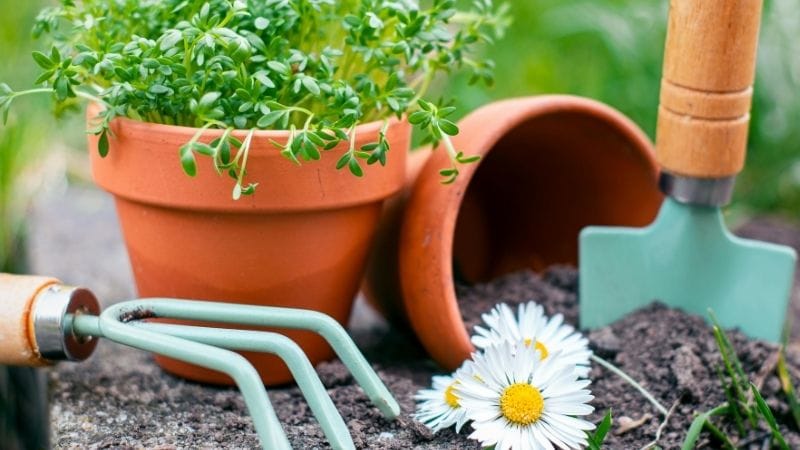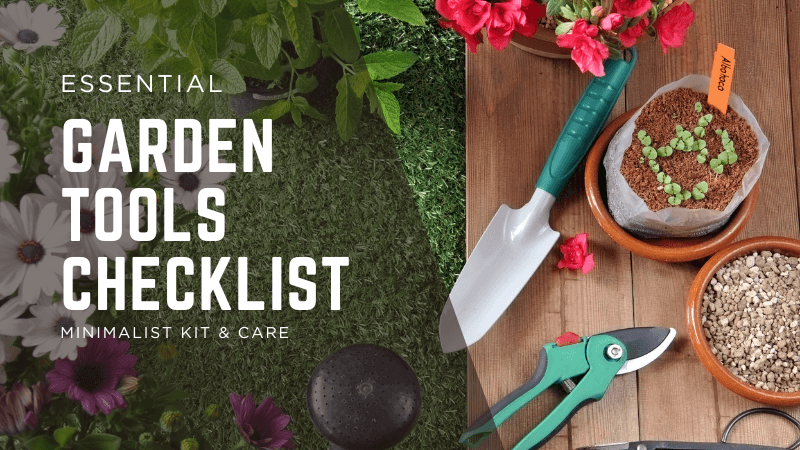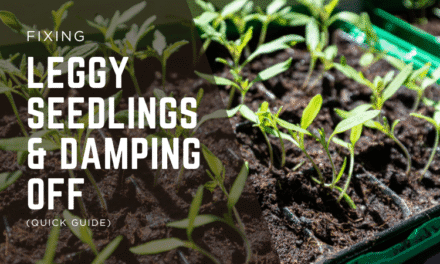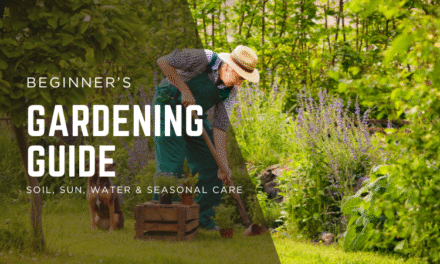This practical garden tools checklist shows how to cover 90% of backyard and balcony tasks with a lean kit. Instead of collecting gadgets you rarely use, you’ll buy once, use often, and keep each tool sharp and ready. Below you’ll find the core six tools, smart upgrades, what build quality actually looks like, ergonomics by body type, basic sharpening, and a storage plan that prevents rust and lost weekends.
Start with the Core Six

These tools earn their place by doing multiple jobs well. With them, you can plant, weed, prune, water, and keep beds tidy without lugging a shed to the garden.
- Gloves (snug fit): protect hands without dulling dexterity. Try on in person—too loose increases blisters.
- Hand trowel (sturdy blade): for planting, potting, and root‑depth checks. Look for a full‑length tang into the handle.
- Hand fork/cultivator: loosens topsoil gently, lifts weeds, and breaks crust after heavy rain.
- Bypass pruners (quality steel): clean cuts on live wood reduce disease entry and save effort.
- Watering wand or fine‑rose can: directs gentle water to soil level to prevent splash and transplant shock.
- Stirrup hoe: ultra‑fast shallow weeding that slices seedlings at the surface—minutes per bed, not hours.
Smart Upgrades (As Needed)
Add these only when your beds or routine demand them. Each should save time, body strain, or water.
- Soil knife: one tool for weeding, dividing perennials, harvesting lettuce and herbs.
- Wheelbarrow or foldable cart: bigger moves without back strain; choose one that fits your storage.
- Drip kit with battery timer: consistent watering without guesswork—healthier roots, less waste.
- Kneeling pad or lightweight kneeler seat: protects knees and lower back during longer sessions.
Buy Once, Cry Once (Build Quality That Matters)
A small, durable kit beats a drawer of cracked plastic. Inspect connection points and steel, not just brand labels.
- Ferrules & tangs: a metal ferrule where handle meets tool should be tight; a through‑tang (metal running into/through the handle) resists snap‑offs.
- Steel: carbon steel takes a sharper edge and is easy to touch up; stainless resists rust with slightly more sharpening effort.
- Replaceable parts: pruner springs, bolts and blades available off‑the‑shelf extend life for years.
- Handles: ash/hickory for warmth and shock absorption; fiberglass for damp conditions; grippy textures for wet days.
How to Use This Garden Tools Checklist Step by Step
The point of a garden tools checklist is focus. Start with the core six for one full season, then add only what solves a recurring problem. Put your kit where you’ll actually reach for it, and document what earns its spot. If a tool doesn’t see use for a month, it probably belongs in storage, not the daily tote.
- Week 1: Assemble the core six; label pruners and wand so they don’t wander off.
- Week 2–3: Track minutes saved using the stirrup hoe compared with hand weeding.
- Week 4: If watering consistency is a struggle, add a drip kit and timer; log plant response.
- Week 6+: If your hands tire, revisit pruning technique and consider compact or ratcheting pruners.
Ergonomics by Body Type & Grip
Fit matters more than specs on a box. Test tools in hand and choose sizes that let you work longer with less fatigue.
- Handle circumference: smaller hands benefit from narrower grips; large hands from thicker, longer handles.
- Weight balance: forward‑heavy trowels dig well but tire wrists; neutral balance suits longer sessions.
- Left‑handers: many pruners are right‑biased; seek reversible or true left‑hand models for safety and accuracy.
- Hoe length: with arm relaxed, the hoe handle should reach about mid‑chest; adjust to avoid hunching.
Sharpening Basics (Fast & Safe)
Sharp tools reduce plant damage and human effort. Five minutes after big sessions keeps everything cutting clean.
- Pruners: lock open; file or stone along the existing bevel only; one or two light passes on the flat side to remove burr; oil lightly.
- Stirrup hoe: a few strokes on the leading edge; keep it keen—sharp hoes are actually safer.
- Trowel/knife: touch up chips; don’t over‑sharpen a trowel—strength matters more than razor edges.
Care, Storage & Rust Prevention
Moisture and grit ruin tools faster than hard work. A two‑minute close‑down routine pays you back every weekend.
- Rinse or brush off soil; dry with a rag; avoid leaving tools in damp buckets.
- Light oil on steel and moving joints—camellia or mineral oil works well.
- Store off the ground in a sheltered spot: wall hooks for long tools; a tote for handhelds.
- Label and inventory quarterly; replace missing springs/bolts on pruners before they fail mid‑season.
Tool Staging: A Grab‑and‑Go Setup
Reduce friction and you’ll garden more often. Stage a compact station near the tap or bed entrances so every chore takes less time.
- Hang the watering wand, pruners, and stirrup hoe on hooks at chest height.
- Keep a small box with hose washers, PTFE tape, replacement dripper barbs, and zip ties.
- Add a rag, small oil bottle, carbide sharpener, and spare gloves to the tote.
- Mount a magnetic strip for small metal tools if the area is dry and sheltered.
Sizing & Materials (Steel, Handles, Ferrules)
Materials determine longevity and feel. Choose for your climate and habits.
- Carbon vs stainless: carbon takes a fine edge quickly; stainless shrugs off wet storage. If you forget to dry tools, choose stainless.
- Wood vs fiberglass handles: wood is lighter and warm; fiberglass tolerates weather and hose storage without swelling.
- Ferrules and collars: look for rivets or bolts that can be snugged, not glued joints that fail silently.
Safety Essentials
Accidents happen when you rush or when tools are dull. Build small habits that make precision automatic.
- Closed and locked: pruners closed when walking; blade pointing down when handing off.
- Kneeling posture: use a pad; keep neutral spine; switch lead knee often.
- Glove choice: snug, breathable fabric for dexterity; thicker leather when moving thorny canes or timber.
- Kids & pets: store sharp tools out of reach; don’t leave tools in lawns where mower blades can hit them.
Budget vs Premium: When to Spend
Spend where precision and durability matter most; save where materials are simple and easy to replace.
- Spend on pruners and the stirrup hoe: sharpness, metallurgy and replaceable parts pay back quickly.
- Mid‑range trowel and fork: choose solid tangs and a comfortable grip; no need for boutique finishes.
- Economy watering can/wand: performance comes from the rose or head—buy a good head and replace the body later.
- Cart/barrow: buy to fit your storage; collapsible options keep small spaces clear.
Seasonal Tool Care Checklist (Printable)

| Season & Timing | Tasks |
| End of summer | Deep clean; sharpen pruners/hoes; oil steel; replace worn hoses and drippers. |
| Start of autumn | Check handle cracks; tighten ferrules and bolts; label tools; audit missing parts. |
| End of winter | Rust check; refresh edge on pruners; organise tote; order any replacement blades. |
| Pre‑spring | Test drip timer; flush lines; check wand gasket; stage tools at garden entrance. |
FAQs
What are the absolute minimum tools for a balcony garden?
A compact version of the core six: gloves, trowel, small cultivator, compact pruners, a 7–10 L watering can with fine rose, and a narrow stirrup hoe or hand hoe for container weeds.
Do I really need a stirrup hoe if I already have a hand weeder?
If you have more than a couple of metres of bed, yes. The stirrup hoe clears tiny weeds in minutes before they root deeply. It’s the single biggest time‑saver in this garden tools checklist.
Which metal is best for pruners?
High‑carbon steel takes a sharper edge and is simple to touch up. Stainless resists rust. Choose based on whether you’ll remember to dry and oil tools after use.
How often should I sharpen?
After any heavy session or monthly at minimum. Small, regular touch‑ups are faster and safer than infrequent, aggressive grinding.
Can one kit work for both raised beds and in‑ground gardens?
Yes. The same core kit works everywhere; you may add a longer‑handled hoe for wide in‑ground beds and a smaller wand for tight raised beds.
Internal Links
Pro Tips That Pay for Themselves
Stage two pairs of gloves—one breathable, one tougher—so you always have a dry backup. Hang the stirrup hoe where you can see it; you’ll use it more. Keep a tiny bottle of oil with the sharpener so touch‑ups happen in seconds. Use a bright handle color or tape so tools are easy to spot in mulch. Put your name on pruners; they mysteriously walk away at community gardens.





